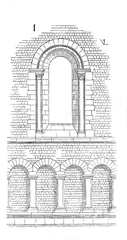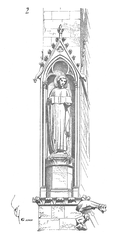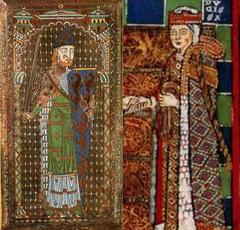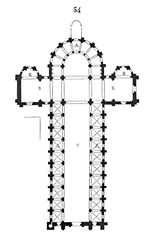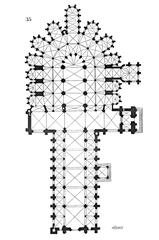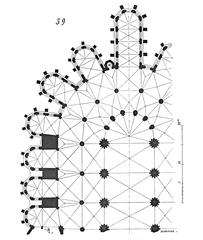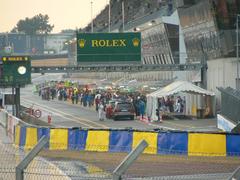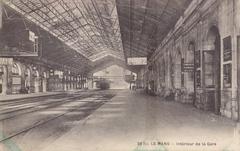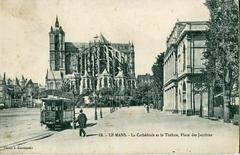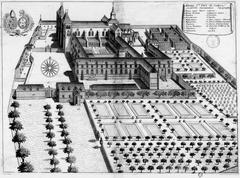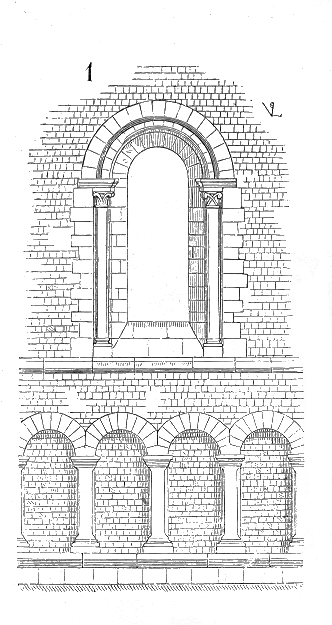
Le Mans Cathedral: Visiting Hours, Tickets, and Historical Sites Guide
Date: 14/06/2025
Introduction
Le Mans Cathedral, officially the Cathedral of Saint Julian of Le Mans, is an architectural and spiritual gem in the heart of Le Mans, France. Commanding a dramatic position atop the historic Cité Plantagenêt, this monumental edifice embodies centuries of religious, artistic, and civic history. Its fusion of Romanesque solidity and Gothic elegance, coupled with a remarkable collection of medieval stained glass, make it a must-visit for history enthusiasts, architecture lovers, and travelers seeking a deep connection with France’s medieval heritage (Medieval Travels, Wikipedia).
This guide provides comprehensive details on the cathedral’s history, architectural highlights, visiting hours, ticketing, accessibility, and nearby attractions—ensuring you are well-prepared for a rewarding visit to Le Mans Cathedral (Le Mans Tourisme, France-Voyage).
Table of Contents
- Introduction
- Historical Overview
- Architectural Evolution
- Interior Highlights
- Visitor Information
- Special Events and Nearby Attractions
- Practical Tips for Visitors
- Frequently Asked Questions (FAQ)
- Conclusion
- References
Historical Overview
Early Origins and Foundations
Le Mans Cathedral’s sacred site dates to the late Roman period, likely supplanting an ancient temple and early Christian churches from the 4th and 5th centuries (Medieval Travels). The presence of the Pierre St Julien menhir near the cathedral underscores the area’s spiritual significance even before Christianity (Wikipedia).
Medieval Construction and Consecrations
Construction of the present cathedral began in the 11th century under Bishop Vulgrin, who initiated the Romanesque nave. After setbacks and reconstructions caused by structural failures and fires, the cathedral was consecrated in 1093 and again in 1120 and 1158. The Gothic choir, with its radiating chapels, was added in the 13th century, reflecting evolving liturgical needs and the growing influence of Le Mans (Medieval Travels).
Architectural Evolution
Romanesque Beginnings
The nave is a classic example of Romanesque architecture, marked by thick walls, sturdy piers, and rounded arches. These elements can still be seen in the western part of the cathedral (FranceRent, The Hawk News).
Gothic Transformation
The 13th-century choir and chevet introduced the innovations of Gothic design: pointed arches, ribbed vaulting, and a remarkable system of bifurcating flying buttresses, allowing for larger stained glass windows and greater verticality (Britannica, FranceRent). The north transept was remodeled in the early 15th century, enhancing the cathedral’s silhouette (Marble ND).
Stained Glass and Artistic Treasures
Le Mans Cathedral is celebrated for its extensive collection of stained glass from the 12th and 13th centuries, ranking just behind Chartres Cathedral in artistic importance (Medieval Travels). The Chapel of the Virgin is home to the “Concert of Angels,” a 14th-century fresco featuring 47 angel musicians (France-Voyage). The menhir and the tomb of Geoffrey Plantagenet are other key artistic and historical highlights (Wikipedia).
Interior Highlights
Nave, Choir, and Ambulatory
The transition from the shadowy, solid Romanesque nave to the luminous, soaring Gothic choir is striking. The choir’s glass-filled chapels and the ambulatory’s radiating design invite contemplative walks (Mechtraveller).
The Great Organ and Choir Stalls
The cathedral’s grand organ, crafted with gilded carvings and angelic motifs, is still used for concerts and services. The intricately carved wooden choir stalls feature misericords depicting biblical and everyday scenes, demonstrating the skill of medieval craftsmen (TravelVibe).
Notable Tombs and Relics
The tomb of Geoffrey Plantagenet, whose marriage at the cathedral founded the Plantagenet dynasty, is a focal point for historical visitors. Other chapels contain Renaissance and Baroque altarpieces and memorials. A notable relic is the Veil of St. Elizabeth of Hungary (Triplyzer).
Visitor Information
Visiting Hours and Tickets
- Regular opening hours: Monday to Saturday: 9:00 AM – 6:00 PM; Sunday: 1:00 PM – 6:00 PM.
- Admission: Entry is free; special exhibitions and guided tours may require tickets (France-Voyage, Triplyzer).
- Tickets: Purchase onsite or via the official tourism website.
Accessibility
- Main entrance via steps, but side entrances offer ramp access for visitors with reduced mobility.
- The nave is wheelchair accessible; some chapels and tower climbs are not recommended for those with mobility challenges.
Guided Tours and Audio Guides
- Guided tours are available in French and occasionally in English; advance booking is advised.
- Audio guides can be rented for a small fee and provide detailed commentary.
Photography and Etiquette
- Photography without flash is allowed. Tripods require permission.
- Visitors should dress respectfully and maintain a quiet, reverent demeanor, especially during services.
Special Events and Nearby Attractions
- Nuit des Chimères: A spectacular summer light show transforms the cathedral’s façade with vibrant projections (Triplyzer).
- Concerts: Regular organ recitals and sacred music performances take advantage of the cathedral’s acoustics.
- Nearby: Explore the medieval Cité Plantagenêt, Roman walls, Musée de Tessé, and the Musée de la Reine Bérengère for complementary historical experiences (Mechtraveller).
Practical Tips for Visitors
- Timing: Mornings and weekdays are quieter; early visits are best for stained glass viewing.
- Duration: Allow 1–2 hours to fully appreciate the site.
- Amenities: Cafés, restaurants, and public restrooms are nearby but not inside the cathedral.
- Weather: The cathedral is a year-round destination, offering shelter from rain and heat.
Frequently Asked Questions (FAQ)
What are the Le Mans Cathedral visiting hours?
Monday to Saturday: 9:00 AM – 6:00 PM; Sunday: 1:00 PM – 6:00 PM. Check ahead for possible changes during special events.
Is there an entry fee?
Entry is free; some tours and special events may require tickets.
Are guided tours available?
Yes, with audio guides and group tours in several languages.
Is Le Mans Cathedral accessible?
The nave is wheelchair accessible; some chapels and tower climbs are not.
Can I climb the cathedral towers?
Occasional guided climbs are available; not recommended for visitors with mobility issues.
Conclusion
Le Mans Cathedral stands as a majestic testament to medieval craftsmanship, faith, and city pride. Its Romanesque-Gothic fusion, exceptional stained glass, and vibrant cultural life ensure every visitor leaves enriched. Plan your visit using up-to-date information on hours, tickets, and events; consider enriching your experience with guided or audio tours. As you explore the cathedral and the Cité Plantagenêt, you’ll be immersed in the remarkable legacy of Le Mans.
For the latest updates, download the Audiala app and follow our social media channels.
References
- Medieval Travels
- Mechtraveller
- Wikipedia
- France-Voyage
- Le Mans Country Club
- Le Mans Tourisme
- FranceRent
- The Hawk News
- Britannica
- Marble ND
- Triplyzer
- TravelVibe
